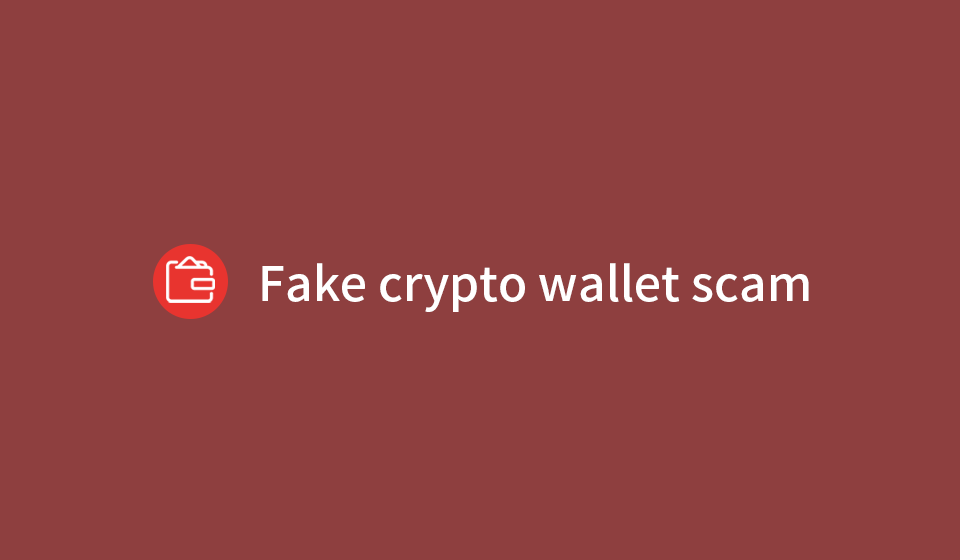Cryptocurrency scams are on the rise, with fake wallets becoming one of the most common methods scammers use to steal your funds. These fraudulent wallets may look like legitimate platforms, offering features and promises that seem too good to be true. In this article, we’ll help you understand how to spot these scams, prevent falling victim to them, and offer some essential safety measures you should take when dealing with cryptocurrency wallets.
What Are Fake Cryptocurrency Wallets?
A cryptocurrency wallet is a digital tool used to store, send, and receive cryptocurrency like Bitcoin, Ethereum, or others. However, in recent years, scammers have created fake cryptocurrency wallet apps and websites that mirror legitimate platforms. These fake wallets often promise high returns, advanced security features, or exclusive access to new cryptocurrency opportunities.
In reality, once you transfer your funds to these fake wallets, they vanish, leaving you with no recourse for recovery. These scams can range from simple apps that steal your private keys to fake websites designed to lure users into entering sensitive information like private keys, seed phrases, and passwords.
Common Types of Fake Cryptocurrency Wallet Scams
- Phishing Websites
These websites look very similar to legitimate cryptocurrency wallet platforms. They trick you into entering your sensitive information, which is then stolen by scammers. Always check the website’s URL and ensure it begins with “https://” to verify its authenticity. - Fake Mobile Wallet Apps
Scammers create mobile wallet applications that appear legitimate in the app stores. These apps are designed to steal your private keys or login credentials. Always download apps only from official sources, such as Google Play or the Apple App Store, and check the app’s reviews for user feedback. - Clone Wallets
Some fake wallets are exact clones of well-known crypto wallets. These wallets often have identical logos, features, and interface, leading users to believe they are using a trustworthy platform. If the wallet asks you to upload your private keys or seed phrases, it’s a huge red flag. - Fake Wallet Promotions and Offers
Scammers sometimes promote fake wallet apps through social media, offering bonuses or rewards for signing up and depositing funds. Always be wary of unsolicited offers or promotions from untrusted sources.
How to Spot Fake Cryptocurrency Wallets
- Check for Official Sources
Ensure that the wallet or platform you’re using is listed on the official cryptocurrency network websites or through trusted third-party reviews. For instance, Bitcoin’s official website provides a list of reputable wallets. - Inspect the URL and Domain
Fake wallets often use slightly altered domain names to deceive users (e.g., using “bitcoinglobal.com” instead of “bitcoin.com”). Always check the URL for slight misspellings or unfamiliar extensions. - Look for User Reviews
Before downloading or using a cryptocurrency wallet, look for reviews on forums, social media, and trusted platforms. If a wallet is new, see if there are any discussions about it in crypto communities like Reddit, Bitcointalk, or Twitter. - Analyze the App’s Permissions
Legitimate wallet apps don’t request unnecessary permissions, such as access to your camera, contacts, or location unless absolutely necessary for functionality. Be cautious of apps that ask for excessive access. - Verify the Security Features
Trusted wallets will have strong security measures in place, including two-factor authentication (2FA), cold storage options, and encryption protocols. Fake wallets often lack these features or claim that they have superior security without any proof. - Be Cautious of Unsolicited Communications
Scammers often use fake emails, SMS messages, or social media ads to promote their fake wallets. Avoid clicking on any links from unknown or suspicious sources.
How to Protect Yourself from Fake Cryptocurrency Wallet Scams
- Use Hardware Wallets for Large Holdings
For long-term storage, consider using hardware wallets like Ledger or Trezor. These physical devices store your private keys offline, making them nearly impossible to hack compared to software wallets. - Enable Two-Factor Authentication (2FA)
Always enable 2FA on your crypto wallet and exchanges. This adds an extra layer of security by requiring a second authentication method (like a code sent to your phone) in addition to your password. - Double-Check the Seed Phrase
Your wallet’s seed phrase is the key to accessing your funds. Never share it with anyone, and make sure to store it in a secure offline location, such as a safe. If a wallet app asks you to provide or verify your seed phrase, it’s likely a scam. - Use Reputable Wallets
Stick to widely recognized cryptocurrency wallets with a strong reputation for security. Examples of trusted wallets include Coinbase Wallet, Trust Wallet, MetaMask, and Exodus. These wallets have been reviewed by the community and are generally considered safe. - Avoid Public Wi-Fi
Public Wi-Fi networks are often unsecured and a prime target for hackers. Avoid accessing your crypto wallet over public Wi-Fi or use a VPN to encrypt your connection if necessary. - Monitor Wallet Activity Regularly
Keep an eye on the transactions made from your wallet. If you notice any unauthorized transactions or unfamiliar addresses, act immediately to secure your funds by changing your wallet’s security settings and contacting support. - Be Wary of “Too Good to Be True” Offers
Any promise of high returns or exclusive cryptocurrency opportunities is likely a scam. Legitimate cryptocurrency investments carry risk and do not offer guaranteed returns. Always research before committing funds.
Conclusion: Stay Vigilant and Informed
The rise of fake cryptocurrency wallets is a serious threat to the security of your funds. By staying vigilant, using trusted platforms, and implementing strong security practices, you can avoid falling victim to these scams. If you suspect that a wallet or app is fraudulent, report it to the appropriate authorities or cryptocurrency forums to warn others in the community.
Remember, the best defense against crypto scams is education and awareness. Always verify the legitimacy of the wallet you’re using and never share your private keys or seed phrases with anyone. Protect your investments by staying informed and taking the necessary precautions to safeguard your digital assets.














